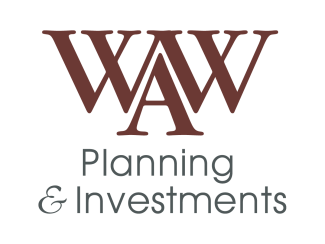Henry David Thoreau, Financial Planner
Over the years I’ve been involved in the world of investments, I’ve found that my clients have been able to make money in all three of stocks, bonds and real estate, though rarely at the same time. Since no one knows the best time to invest in any one of them, we encourage most of our clients to use all of them. Investing in stocks and bonds is pretty straightforward because they trade so openly: market results are reported in the daily news. Real estate is generally less liquid so for most investors, their home represents that portion of their portfolio.
As our clients near retirement, we usually begin transitioning from a focus on growth to one on income. In addition to managing Social Security and any pension income, this often involves the interest from bonds and dividends from stocks. Since home equity is part of most retirement nest eggs, we’re sometimes called upon to find a way to tap that equity when the time comes.
One of the ways to do that is a reverse mortgage. Aptly named, this is an instrument that makes part of the equity in a home available either as a line of credit or a monthly income. Although we haven’t recommended the strategy for many years, new government guidelines have been developed and the concept may now be more useful.
The wise folks at Boston College’s Center for Retirement Research have established themselves as one of today’s most useful retirement resources. Taking the new data into account, they’re offering a booklet on the topic for download and I thought I’d share some thoughts with you. Interestingly, even though it is titled Using Your House for Income In Retirement, the first strategy described is one of our long time favorites: downsizing. According to the Consumer Financial Protection Bureau, 30% of Americans 65 and older still have mortgage-backed debt, up from 22% in 2001. Loan balances have increased too, with the average having risen from $43,400 to $79,000 (adjusted for inflation). In isolation this fact is neither good nor bad, as we suspect home values have risen too but the process of downsizing may be the easiest way to satisfy existing mortgage loans and simplify our clients’ lives.
Because it’s our experience that pretty much everybody moves to a smaller dwelling at some point, we encourage our clients to do it sooner rather than later. That way, they are at their youngest and healthiest when the move takes place. They are better able to make decisions and get to enjoy the benefits of a smaller home for a longer time. To give an example, consider a client couple who had once lived in a 4800 square foot home with 2 fireplaces, 4 bedrooms and 3.5 baths on three floors. After their kids were gone, they bought an 1800 square foot ranch home with everything they need on the main floor. Of course, there’s no reason an even more significant move couldn’t have been made, to a condo or even an apartment.
Boston College’s booklet does a good job of comparing the advantages of downsizing to those of a reverse mortgage and also estimates the costs associated with each. Briefly, it suggests that downsizing will involve some repairs on the old home and updates on the new, plus real estate commissions. They believe that 10% of the home’s value is a reasonable estimate of what such a move will cost. Assuming there’s equity remaining after that, downsizing might make the most sense.
The costs associated with a reverse mortgage are lower percentage-wise but could be as much as $6000 – not an insignificant sum. The reverse mortgage line of credit is typically much lower than a traditional home equity line of credit. Also, fees and interest rates are both higher. So why would anyone consider a reverse mortgage? There’s no need to repay it no matter how long you remain in the home. The US Department of Housing and Urban Development provides a calculator which can be used to estimate how large a reverse mortgage line of credit might be available and what the associated costs might be.
Warren Ward Associates’ strategy has always been to see how simple we can make our clients’ lives. That way they have fewer worries and are better able to enjoy themselves. Whether downsizing or a reverse mortgage is the best way to achieve that depends on the specific situation but attempting to live the simplest life possible is an important goal to strive towards. And that thought brings me to the reason I turned to 19th century author, poet and philosopher Henry David Thoreau for today’s title. In his best known book, Walden, he says: Our life is frittered away by detail. Simplify, simplify, simplify! Good advice at all times but especially during the transition to retirement.

